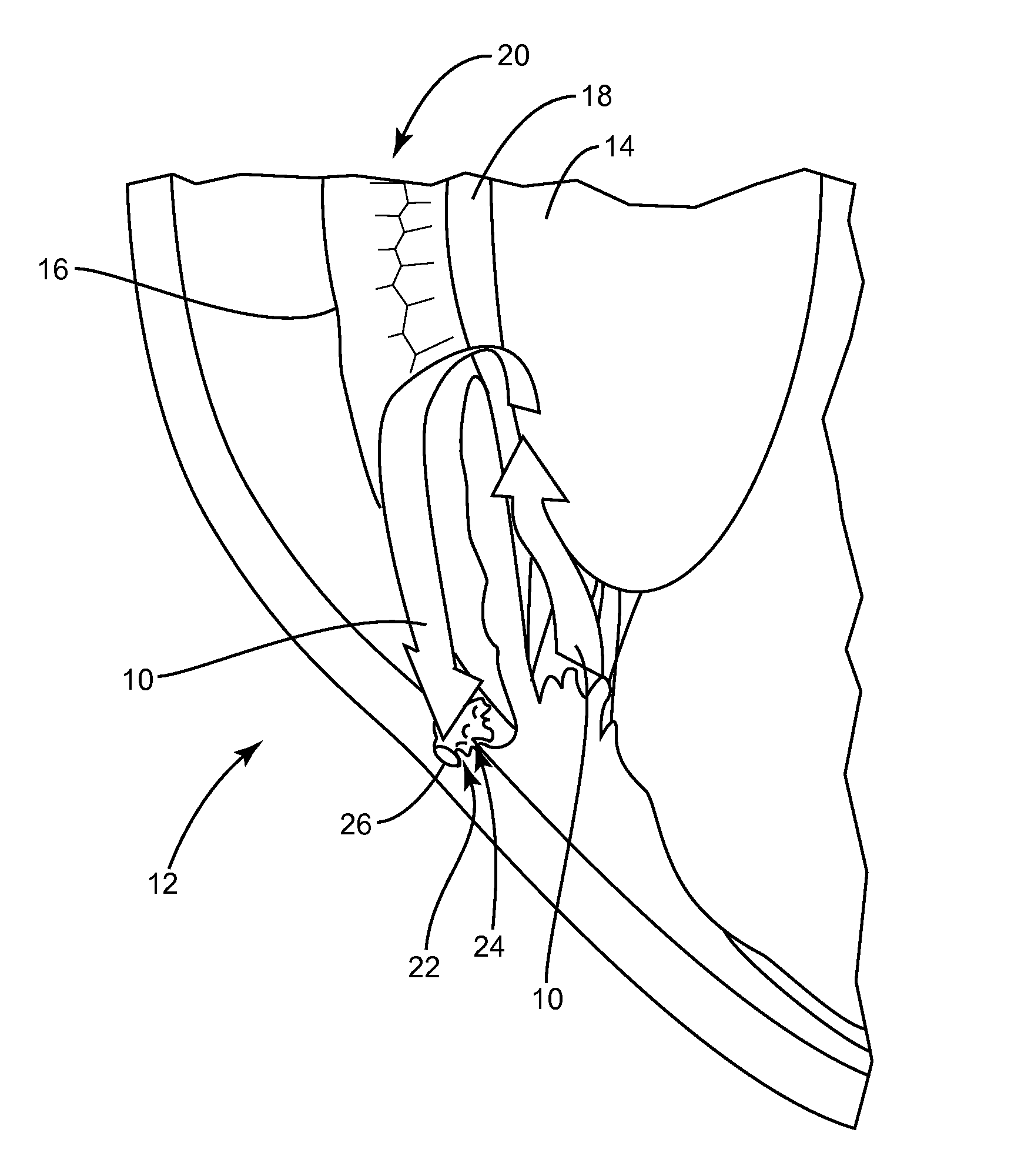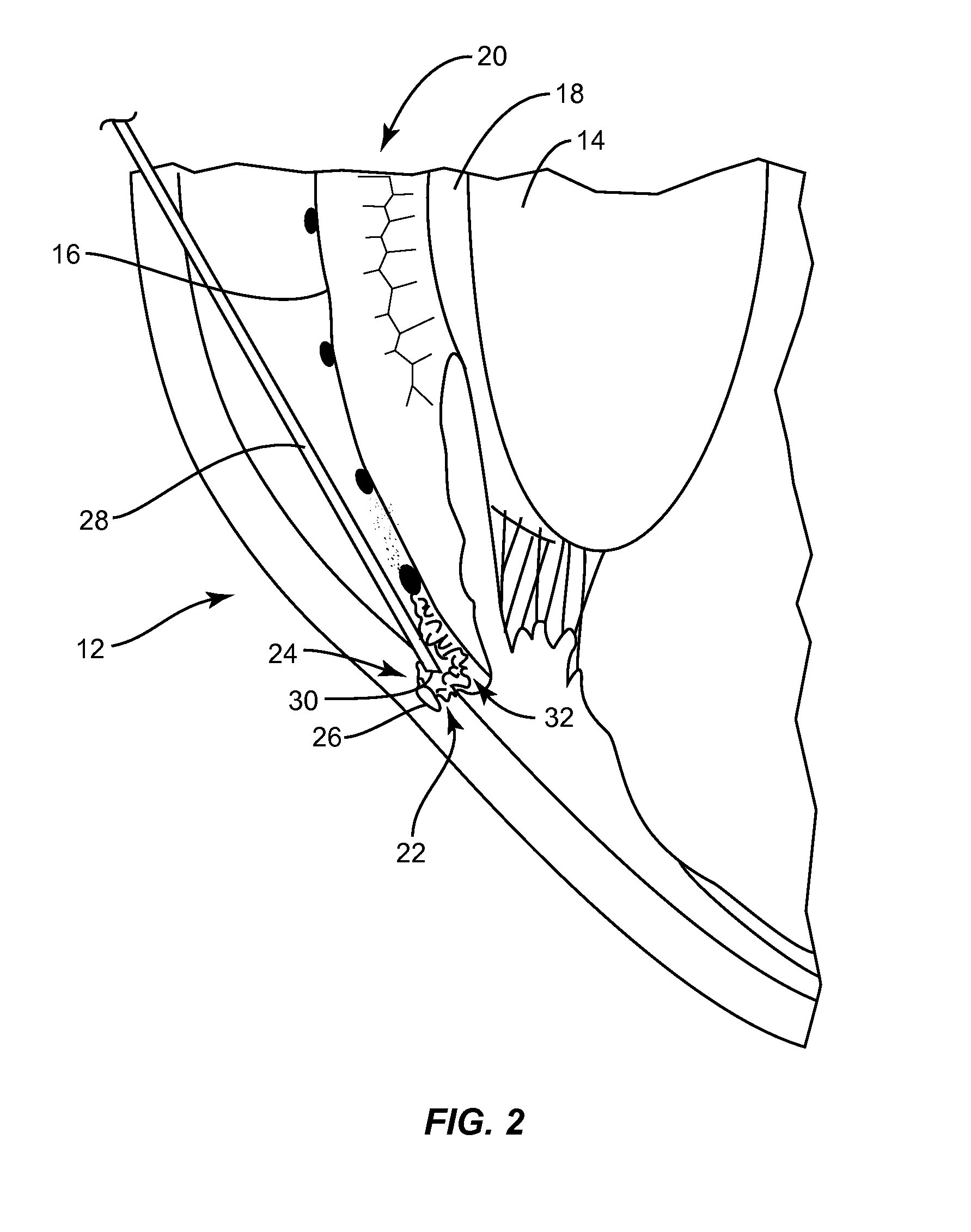Methods, apparatuses, and systems for reducing intraocular pressure as a means of preventing or treating open-angle glaucoma
a technology of intraocular pressure and reducing intraocular pressure, which is applied in the field of methods and apparatuses for reducing intraocular pressure as a means of preventing or treating open-angle glaucoma, can solve the problems of ocular hypertension (oht), side effects, and reduced effectiveness of medication, so as to reduce intraocular pressure and improve patient's iop , the effect of reducing the level of iop
- Summary
- Abstract
- Description
- Claims
- Application Information
AI Technical Summary
Benefits of technology
Problems solved by technology
Method used
Image
Examples
Embodiment Construction
[0011]Embodiments of the present invention include methods, apparatuses, and systems for reducing intraocular pressure (IOP) levels in a patient as a means of either preventing or treating open-angle glaucoma. The breakthrough of the present invention is that heat, when applied at a temperature above body temperature and directed to the trabecular meshwork in the patient's eyes. can sustainably reduce IOP. The application of heat to the trabecular meshwork has the effect of loosening or relaxing protein clogs or blockages or other inhibitors in the trabecular meshwork that may either be reducing or obstructing of the outflow of aqueous humor thereby increasing the patient's IOP as a result. Preferably, the heat is directed to circumference area of the sclera in a line towards the trabecular meshwork and outside or out of line with the pupil and iris of the eye for safety reasons. This may also enable higher temperatures of heat to be applied to compensate for any heat transfer losse...
PUM
 Login to View More
Login to View More Abstract
Description
Claims
Application Information
 Login to View More
Login to View More - R&D
- Intellectual Property
- Life Sciences
- Materials
- Tech Scout
- Unparalleled Data Quality
- Higher Quality Content
- 60% Fewer Hallucinations
Browse by: Latest US Patents, China's latest patents, Technical Efficacy Thesaurus, Application Domain, Technology Topic, Popular Technical Reports.
© 2025 PatSnap. All rights reserved.Legal|Privacy policy|Modern Slavery Act Transparency Statement|Sitemap|About US| Contact US: help@patsnap.com



